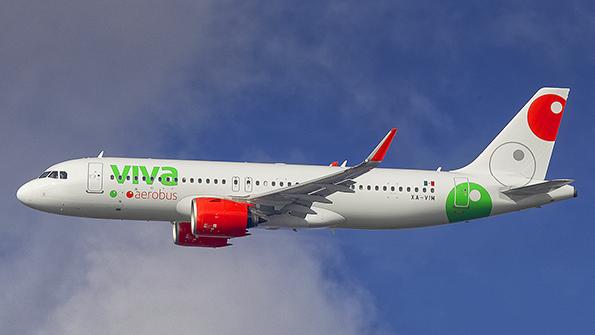
The 2021 outlook for airlines in Latin America depends on where you’re looking.
LCCs in Brazil and Mexico are bullish for a significant return in air travel demand in the 2020 fourth quarter, extending into the first half of next year. GOL, Brazil’s largest domestic carrier by passenger numbers, is looking to operate 80% of domestic capacity in this quarter and for that recovery to continue into 2021. GOL CEO Paulo Kakinoff spoke of a “remarkable rebound” in the third quarter, with the number of passengers tripling compared to the second quarter. Azul, another Brazilian LCC, expects capacity in December to reach 60% of 2019 levels.
Mexican LCCs are also bucking industry trends. Volaris expects its fourth-quarter capacity to be at 90% of year-ago numbers and, according to EVP commercial and operations Holger Blankenstein, to see a full recovery to 2019 passenger levels by mid-2021. VivaAerobus is also restoring capacity at a rapid clip relative to most other airlines, in the region or worldwide. In November, VivaAerobus is adding flights from Mexico City to Acapulco, Campech, Chetumal and Ciudad del Carmen, as well as to Dallas-Fort Worth in the US. CAPA and OAG data show that for the week of Nov. 2, Volaris and VivaAerobus were the second largest operators at Mexico City, measured by seats deployed, with 23% and 17.6% shares. Aeromexico has a 41.2% share but is in Chapter 11 restructuring.

For Latin America’s LCCs, which compete with buses—VivaAerobus is owned by a bus company and sells combined bus/airline tickets for door-to-door service—the pandemic is a rare instance of opportunity. Their strong reliance on visiting friends and relatives (VFR) traffic and short, point-to-point operations puts them in a better place not just because those are the market sectors making a quicker recovery in general, but also because they are in a position to take market share from the region’s legacy carriers.
Most Latin American countries have given little to no financial support to aviation through the crisis. The region has endured some of the strictest and lengthiest air transport lockdowns. Brazil, Chile and Mexico were the only countries to remain partially open. Argentina’s aviation system went into a six-month complete lockdown in March, with the government not even permitting airlines to sell tickets. It finally allowed domestic flights in October, then international service in November, putting Aerolineas Argentinas behind in its ability to restart.
Colombia, almost alone in supporting its airlines financially when the COVID-19 outbreak took hold, did provide $370 million in loans to help Avianca through its Chapter 11 restructuring and permitted a limited restart on Sept. 1 that covers 15 Colombian airports, with flight capacity capped at just 12%, but there are significant restrictions.
The result of the combination of the pandemic’s much more severe impact on international travel and Latin American governments’ meager support for aviation is that the region’s legacy carriers have been hit far harder than the LCC startups and their recovery will be much lengthier—if even possible. Some of the region’s biggest names—Avianca, Aeromexico, LATAM—now hinge on the outcomes of Chapter 11 restructuring. While they may ultimately come out of those processes more efficient, they will be further behind their international competitors, particularly the US majors that have had substantial government support via the congressional CARES Act. This could lead to more consolidation.
Looking at the next couple of years in a more positive light, Latin American governments could use the crisis to implement the long-overdue modernization of their air transportation laws and systems, revise how they tax the industry, travel and tourism, and provide fertile ground for LCCs to connect more cities than ever before.
“You could see ultra-LCCs mushrooming and consumers would have a lot more options and no longer have the ‘bus only’ option. It could be a game changer if governments really looked at transformation of the air transport industry,” IATA regional VP, The Americas, Peter Cerda said.
